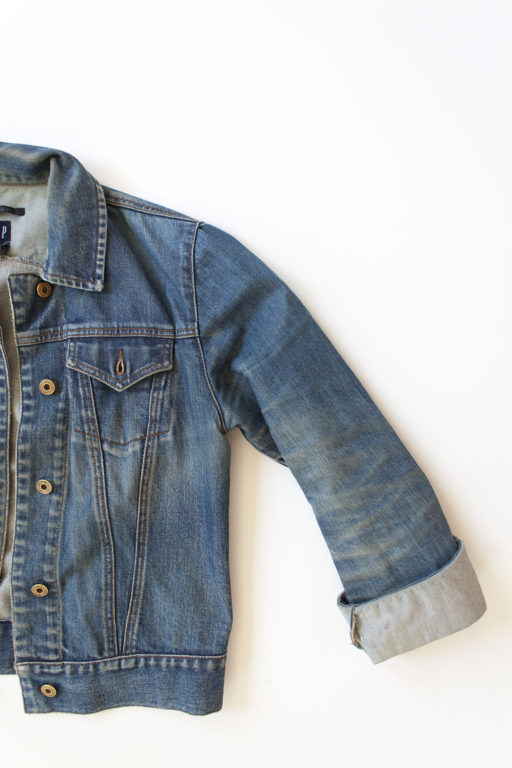
One of my favorite garments is a denim jacket I bought at a thrift store eight years ago for $3. It had been previously worn with love and this showed significantly. The denim was soft, the welt seams were frayed in places, and the elbows were faded with wear. Almost a decade later, this piece has only improved with every wear. It is instant cool. Perfecting any casual look, the denim jacket slipped on over a little black dress makes the look a little less fussy.

If this garment was brand new, with a perfectly uniform wash of color, crisp and pretty, I would not have the same feelings for it. Sometimes, worn out and flawed is better. I feel this way every time I make a project out of denim. This looks great, but it would look FAR better if I washed it ten times and ran it over with my car.
Heavily distressed denim isn't everyone’s bag. I get it, it is a niche look. In this article, you will learn how to achieve various degrees of distressing. Whether you just want to break in and soften your denim fabric without destroying the finish, or if you want to completely change the surface of the fabric with a deconstructed look, this guide can help you achieve all of the above as well as teach you how to mend your garments using Sashiko embroidery technique.
Soda Ash Wash
I once read an article about pre-washing silk in soda ash to create a sand-washed affect. Soda ash is a nicer-sounding term for sodium carbonate and is usually used for setting Procion dyes. Typically, soda ash is used to pre-treat fabric before dyeing or added to the dye bath. This compound has a more abrasive effect on fabric when soaked for longer than an hour, and the element of physical agitation is added into the mix.
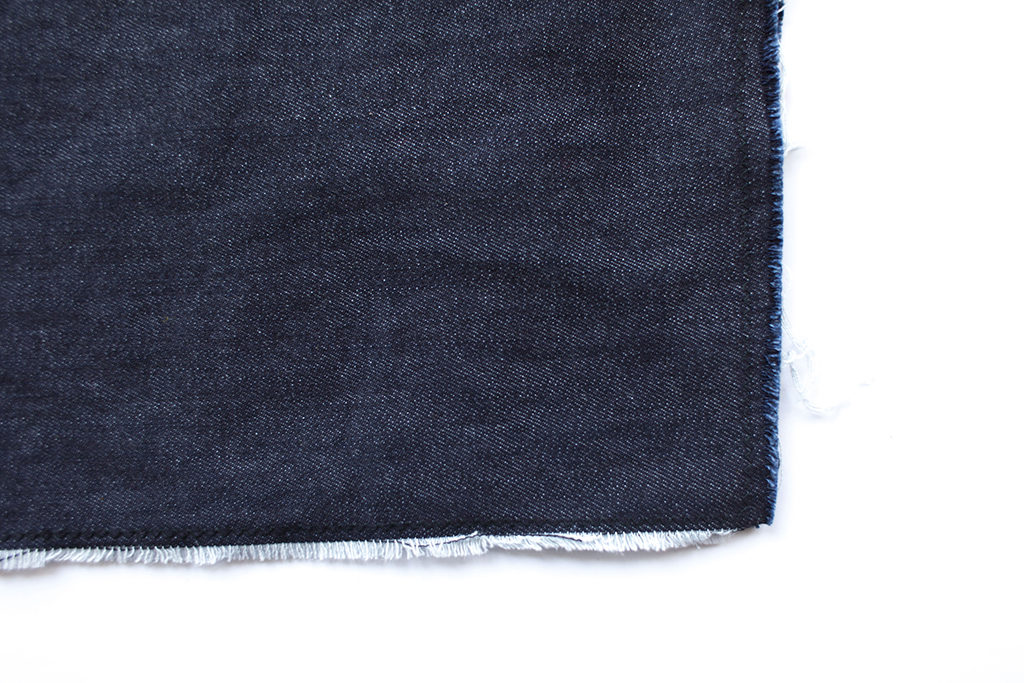
I was curious about how this treatment would affect other fibers, particularly denim. The results did not change the appearance on the denim, but instead softened it significantly, offering more drape, and a softer hand. Though this will not turn your heaviest weight denim into shirting, it will soften the fabric giving it the feel of perfectly broken in denim.
You'll need:
- Finished denim project or denim yardage
- 2 cups soda ash
- A washing machine
- Pretreat fabric to remove sizing by washing on a normal cycle using warm water and no detergent.
- Next, set the washing machine to the longest cycle setting (this is usually the "normal" setting) and use hot water. Add 1 cup of soda ash and allow washing machine to fill completely.
- Place fabric in washing machine and run cycle. If you are using a front-load washer, you can add the fabric and soda ash all at once.
- Repeat steps 2 and 3.
I found that after one cycle the fabric was softer, but more significant results were achieved after repeating a second cycle using soda ash.
If you are using a top-load washing machine, you can achieve a more drastic effect by filling the basin, adding soda ash, allowing the washing machine to agitate for a minute, then opening the lid of the machine and letting the fabric soak for thirty minutes to an hour.
At-home stone washing
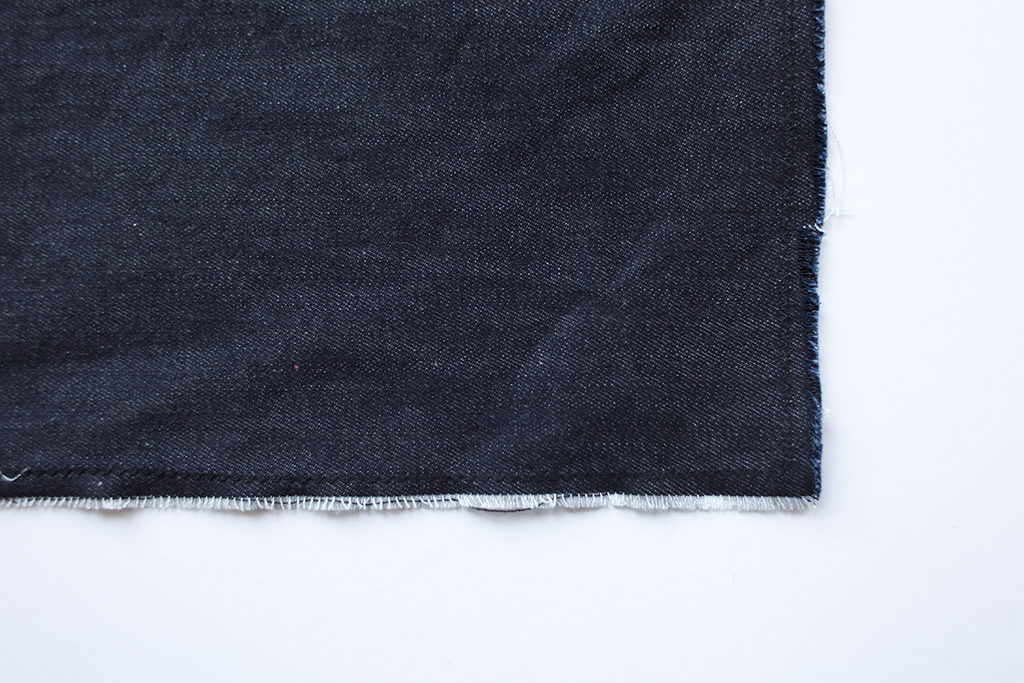
Stones in my washing machine?
I did not experience any adverse effects to my washing machine when I tried this at home using a five-year-old top-load machine. I was expecting this process at the very least to be noisy, but I am happy to report that it did not frighten the cat or destroy my washing machine.
Stone washing is a textile manufacturing process used to lend a newly manufactured garment a worn-in look and hand. Stone-washing increases the softness and malleability of rigid fabrics like denim. To achieve this in factories, finished garments are placed into industrial front-load washing machines, along with large stones. During the washing process, the interior cylinder rotates, the stone ride up the paddles inside the drum, then fall back down onto the fabric. This process distresses the denim and gives it the appearance and hand of a garment that has seen years on use. You can achieve a similar affect at home using pumice stones.
You'll need:
- A washing machine
- Finished denim project or denim yardage
- 4 or 5 natural pumice stones
- Toss your garment or fabric in the washing machine along with the pumice stones. If you are only washing a small amount of fabric or just one garment, add an old towel to prevent the stones from beating up your washing machine.
- Set your machine to a normal cycle using warm water. Do not add laundry detergent.
- Repeat steps 1 and 2.
After one wash, the denim was noticeably softer, though I felt that this was mostly due to the fact that all of the sizing had been removed. After a second cycle, the fabric had relaxed farther, though no significant fading was obvious. This method is great for softening your denims without the use of chemical softeners, and definitely yielded a better result than just washing and drying alone. The surface of the denim was slightly faded, giving the look of denim that has been worn and washed for several months.
Manual Distressing
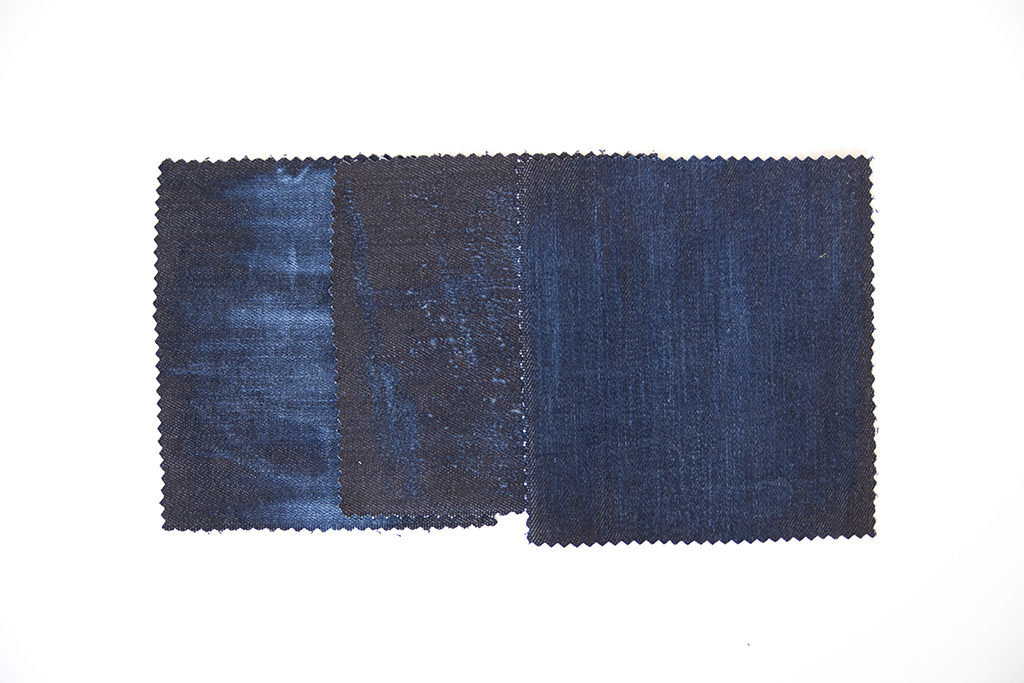
Manual distressing is exactly what the name implies; it is the labor-intense (but effective) act of distressing fabric with your own two hands and some helpful tools. Different tools yield very different results. This is by far the most destructive method outlined in this guide. These techniques will yield a look that is highly distressed. Use the following as a guide to get intentional and consistent results when you are distressing garments and fabric.
Pumice Stone
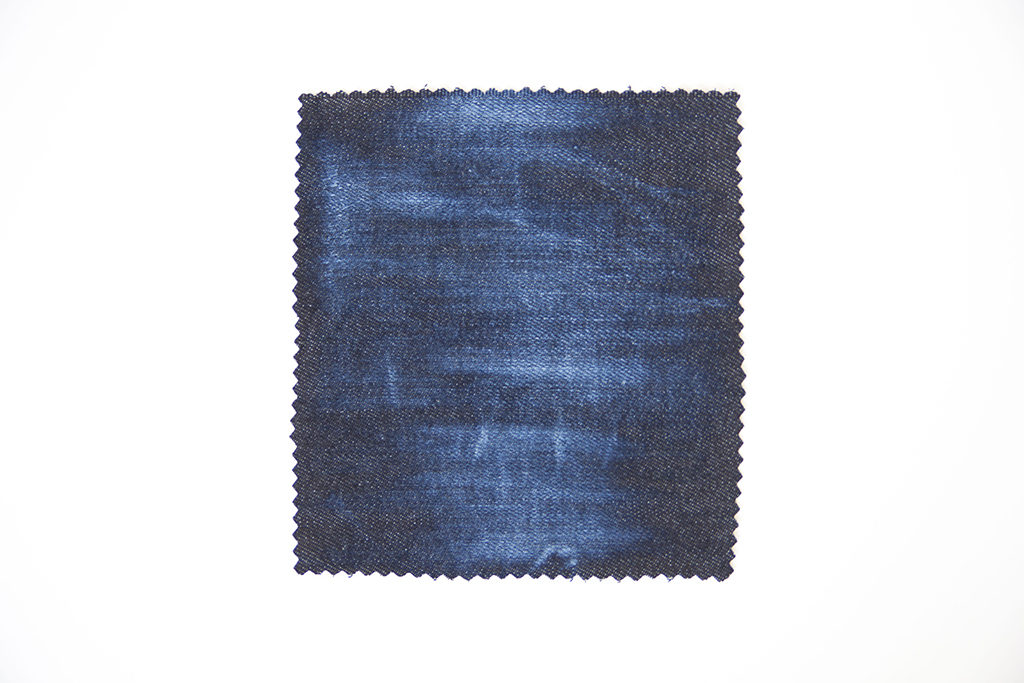
You can also use a pumice stone manually to create wear in a more controlled area. This method creates a most natural effect, and looks very organic when applied on a finished product. Try using a pumice stone to roughen up seams and patch pockets. This creates the look of a garment that has been loved for years.
Sandpaper
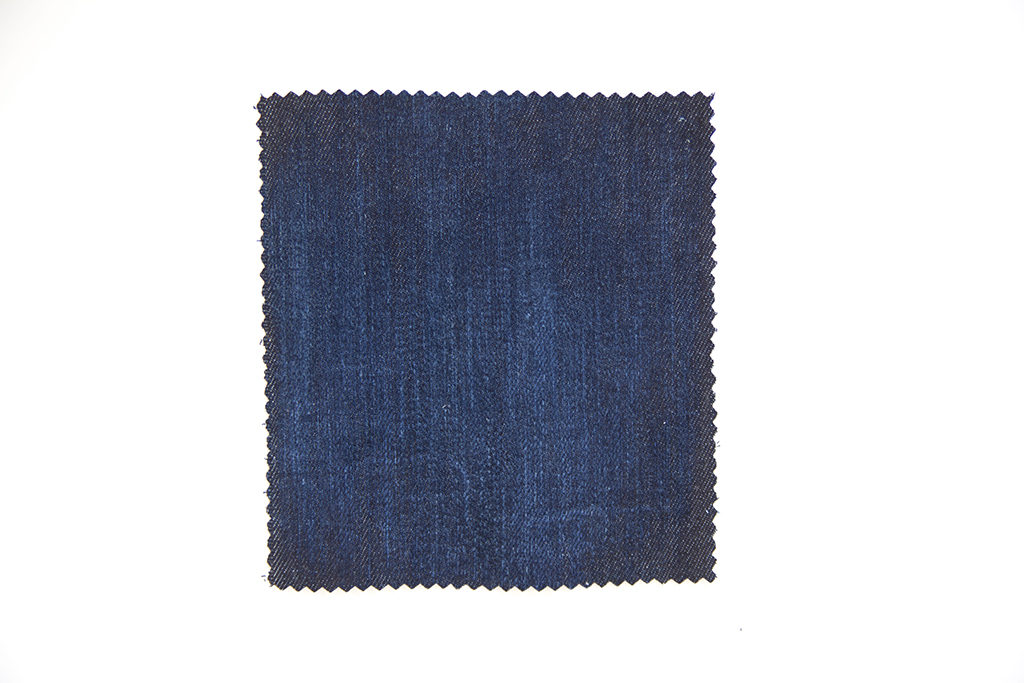
This technique uses sandpaper to abrade the surface of your denim. Varying grits will yield different results. In the above image, I used 100-grit sandpaper.
For a drastically distressed look, use a larger grit like 80.
This technique created a softer surface, with results that are not unlike flannel. This is the most subtle of all the manual distressing techniques.
Cheese Grater
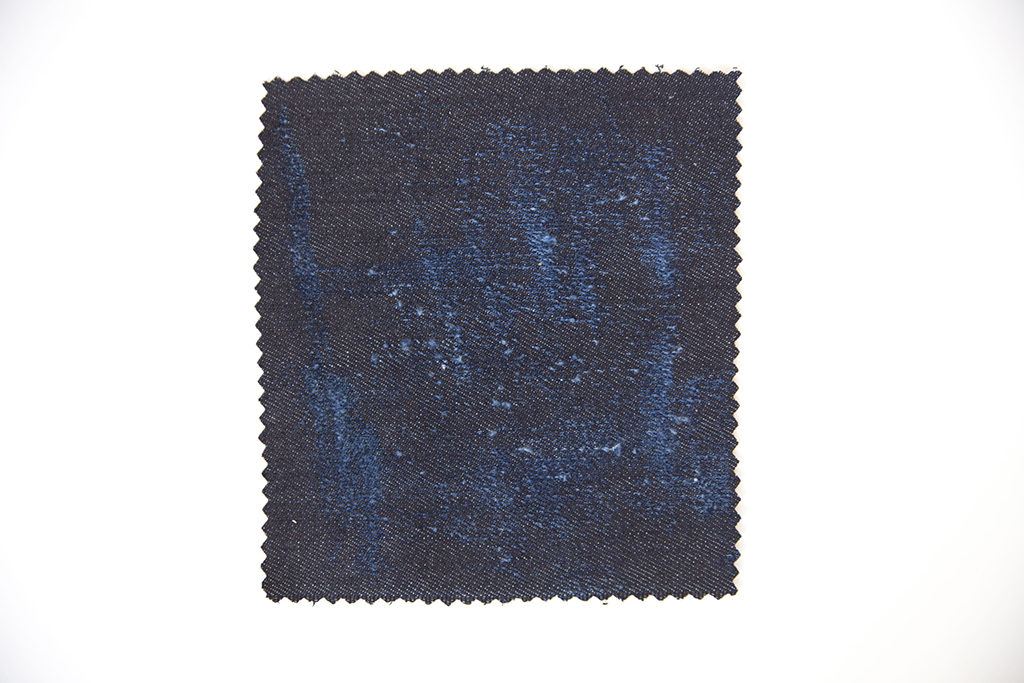
For this technique, I used a microplane zester to roughen up the surface of the fabric. This offers a very dramatic distressed look. The small blades of the grater snagged and pulled at the fibers creating a textured look. This snagging reveals the lighter weft threads creating some variation in the color of the fabric. It also helped to encourage small rips and holes.
Sashiko and Boro Mending
Sashiko is a form of Japanese folk embroidery using a basic running stitch to create a patterned background. These patterns can vary greatly, from geometric to curvilinear. The Japanese word Sashiko translates to “little stabs.” It refers to the small running stitches used in this form of embroidery. Sashiko was originally used as a form of darning to repair or strengthen worn areas of clothing or to create insulated double-layered coats.
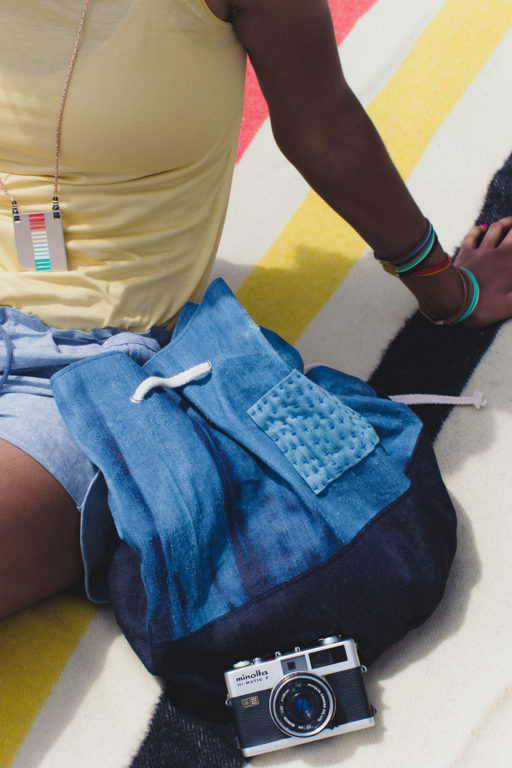
Boro was worn by peasants, merchants, or artisans in Japan from the seventeenth to early nineteenth centuries. In feudal times, not everyone could afford the lavish silk kimonos worn by the aristocracy. Clothes were created from inexpensive materials. The word boro translates to “as rags or scraps of cloth.” The term boro is also used for clothes and household items that have been patched and repaired many times over.
Sashiko and boro techniques can be a beautiful and thoughtful addition to denim to reinforce areas of wear. Instead of using your sewing machine to darn areas of wear, use a decorative and functional Sashiko stitch. Incorporate boro by applying patches using large running stitches to create. Make mending a design feature, instead of something done out of necessity with the hope of invisibility.
Denim is the people’s fabric. Its simplicity and resilience are unparalleled, so it is no surprise that it is a key player in most of our wardrobes. Why not mix it up and have fun the next time you sew with it? Or maybe next time you clean out your closet and you contemplate (yet again) whether or not to donate that old pair of jeans. Mend them, make them better. That is the spirit of sewing after all, make do, mend, and possibly make a mess of things while you are at it.



